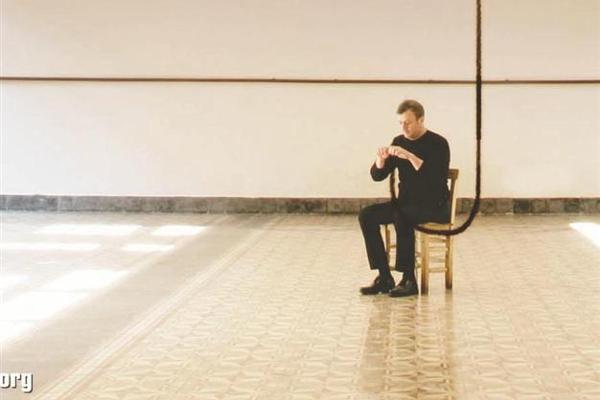Mardin inspired project to create a common sky
ISTANBUL - Hürriyet Daily News


The surce of inspiration for the project of Kutluğ Ataman was the house of a well known Syriac woman, Nasira Hanım.
The Arab Spring has so far inspired many artists and art projects. For Turkish artist Kutluğ Ataman, however, the uprising in the Middle East did not serve as a direct inspiration in the beginning, but rather as an unintended consequence, since it was the Arab awakening that gave birth to his latest project.By the time Ataman was on the road to Syria last year for a new project, the winds of the Arab Spring had reached Turkey’s southern neighbor. Although Ataman had been advised not to go to Syria he decided to chance his luck on reaching the country from Mardin, where he found himself stuck when his entrance was denied. In Mardin, Ataman came across Syriac culture, which later inspired his art. While in the city he was advised to visit the house of Nasira Hanım, a well known Syriac woman, whose ceiling he found most interesting.
This is how Ataman became familiar with “sılsel,” an Aramaic word meaning “the fluttering of wings” that was used to describe the sky paintings done on ceilings in many old Syriac homes in Mardin. “[Hanım told me that] according to the tales, Syriacs were once afraid to go outside because of the atrocities going on, so they made a symbolic sky [inside] as they were longing for the sky,” he said.
“I am neither a historian, nor a sociologist or anthropologist. I don’t know whether these tales are accurate or not. [But] it does not matter, I take what she told me it as the truth,” said Ataman, speaking recently to a group of journalists.
After learning the meaning behind “sılsel” Ataman was inspired to create a project to compose a common sky.
“A common sky, under which everyone has the right to live, has remained something that is much longed for in the violence-torn history of Anatolia,” he said in the project’s manifesto. “SILSEL: Türkiye’ye yazılmış mektuplar” (SILSEL, Letters to Turkey) is scheduled to be part of the 18th annual Istanbul Theater Festival, organized by the Istanbul Culture and Art Foundation (IKSV).
Ataman is calling for participants, people of all ages and backgrounds, to express what their ideal Turkey looks like on strips of fabric. The fabric will be sewn together to form a sort of sculpture, which will give way to a depiction of a conceptual sky as it grows.
“These will be letters written to Turkey as we want people to express what kind of a sky they want to live under,” Ataman said.
“It’s like the metaphor of social cohesion. We’ll be constructing the social life together,” said Ataman, adding that he hoped his project would become a sort of civilian document, enabling those looking back 100 or 200 years from now to understand what people in Turkey were asking for now. A parallel can be drawn between Ataman’s SILSEL project and Parliament’s efforts to draw up a new constitutional charter, as the government has asked representatives of civil society to contribute to the lawmakers’ task, said Görgün Taner, the general manager of IKSV. It is because of this that IKSV and Ataman want as many people as possible to participate in the interactive project.
The fabric strips will be sewn together in the performance space, a former Greek elementary school in the Karaköy neighborhood of Istanbul.
Those interested in participating in the project should visit the school during the theater festival, which this year runs from May 10 to June 5.
